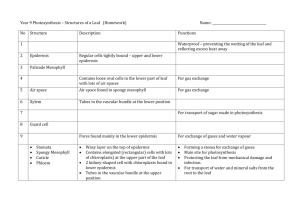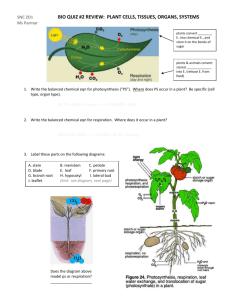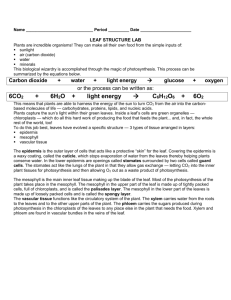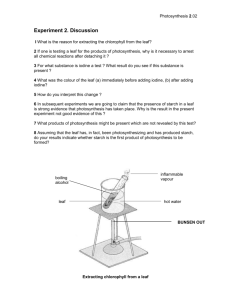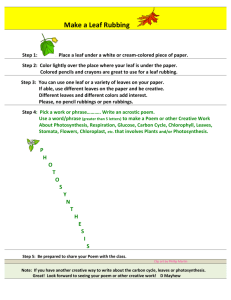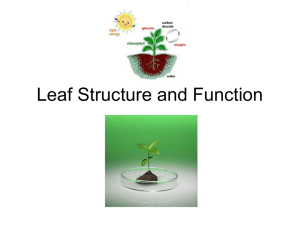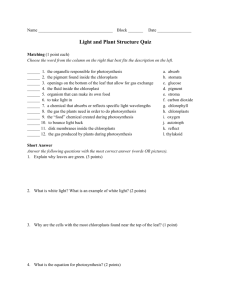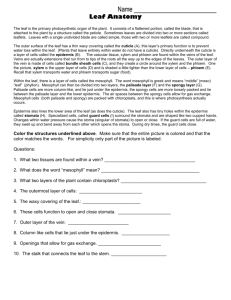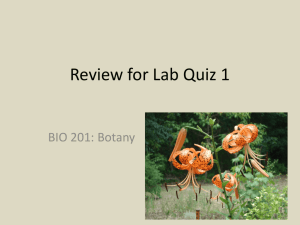What parts of a plant do we eat
advertisement
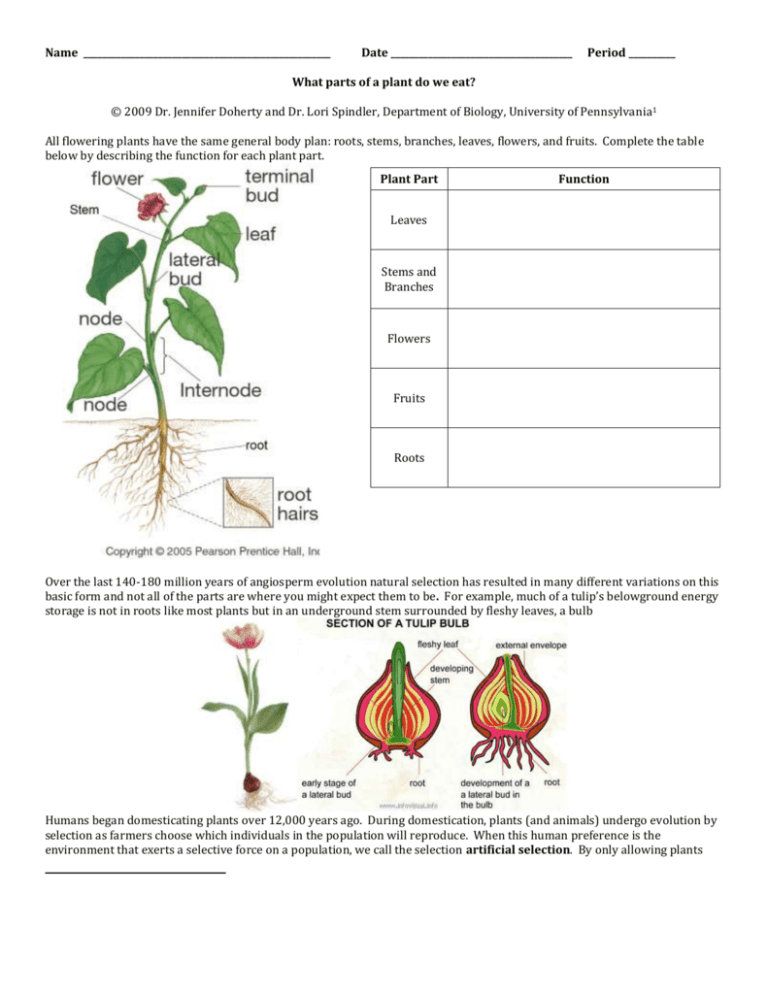
Name _____________________________________________________ Date _______________________________________ Period __________ What parts of a plant do we eat? © 2009 Dr. Jennifer Doherty and Dr. Lori Spindler, Department of Biology, University of Pennsylvania1 All flowering plants have the same general body plan: roots, stems, branches, leaves, flowers, and fruits. Complete the table below by describing the function for each plant part. Plant Part Function Leaves Stems and Branches Flowers Fruits Roots Over the last 140-180 million years of angiosperm evolution natural selection has resulted in many different variations on this basic form and not all of the parts are where you might expect them to be. For example, much of a tulip’s belowground energy storage is not in roots like most plants but in an underground stem surrounded by fleshy leaves, a bulb Humans began domesticating plants over 12,000 years ago. During domestication, plants (and animals) undergo evolution by selection as farmers choose which individuals in the population will reproduce. When this human preference is the environment that exerts a selective force on a population, we call the selection artificial selection. By only allowing plants with traits we enjoy, like larger and sweeter fruits, to reproduce, humans, like nature, have caused many changes in plant form. In today’s activity your goal is to identify which part (root, stem, leaf, flower, or fruit) of a domesticated plant we eat. Before you start it will be helpful to review the structure of flowers and the meaning of the word “fruit.” 1) Which part of the flower becomes a fruit? 2) How can you tell if a plant organ is a fruit? 3) Sometimes, a plant organ that is biologically a fruit is called a “vegetable” in everyday English. This is because these fruits have lower amounts of the sugar fructose and are used in savory rather than sweet cooking. Can you think of two fruits that are called vegetables? Your teacher will supply pictures of several foods and vegetables for you to examine. In the table below, record which part of the plant each of these is, what evidence you used to make that conclusion, and whether it is a fruit or a vegetable in everyday English. It will be helpful to refer to the figures and table on pages 1 and 2 and ask yourself, “How can I tell if this plant part is a root/stem/leaf etc.?” If you have conflicting evidence, what else would you need to know to make your decision? Name Plant Part Evidence/Further information (3 evidence) Is this called a fruit or vegetable in everyday English? Leaf Structure Plants are incredible organisms! They can make all their own food from the simple inputs of: sunlight air (carbon dioxide) water minerals This biological wizardry is accomplished through the magic of photosynthesis. This process can be summarized by the equations below. Carbon dioxide 6CO2 + + 6H2O water + light energy or the process can be written as: + light energy glucose C6H12O6 + + oxygen 6O2 This means that plants are able to harness the energy of the sun to turn CO2 from the air into the carbonbased molecules of life — carbohydrates, proteins, lipids, and nucleic acids. Plants capture the sun’s light within their green leaves. Inside a leaf’s cells are green organelles — chloroplasts — which do all this hard work of producing the food that feeds the plant... and, in fact, the whole rest of the world, too! To do this job best, leaves have evolved a specific structure — 3 types of tissue arranged in layers: epidermis mesophyll vascular tissue The epidermis is the outer layer of cells that acts like a protective “skin” for the leaf. Covering the epidermis is a waxy coating, called the cuticle, which stops evaporation of water from the leaves thereby helping plants conserve water. In the lower epidermis are openings called stomates surrounded by two cells called guard cells. The stomates act like the lungs of the plant in that they allow gas exchange — letting CO2 into the inner plant tissues for photosynthesis and then allowing O2 out as a waste product of photosynthesis. The mesophyll is the main inner leaf tissue making up the blade of the leaf. Most of the photosynthesis of the plant takes place in the mesophyll. The mesophyll in the upper part of the leaf is made up of tightly packed cells, full of chloroplasts, and is called the palisades layer. The mesophyll in the lower part of the leaves is made up of loosely packed cells and is called the spongy layer. The vascular tissue functions like the circulatory system of the plant. The xylem carries water from the roots to the leaves and to the other upper parts of the plant. The phloem carries the sugars produced during photosynthesis in the chloroplasts of the leaves to any place else in the plant that needs the food. Xylem and phloem are found in vascular bundles in the veins of the leaf. 1. Below is a diagram of a cross section through a leaf. Label the structures discussed above. 2. Draw a full leaf and show the side that collects the energy from the sun. Place the symbols for CO2, O2, and H2O on your model and draw arrows to show the movement of these gases in and out of the leaf through the stomatas. 3. What are two functions of the stomates? 4. What is the function of the xylem? 5. What is the function of the phloem? 6. Difference between primary and secondary growth: 7. Difference between apical and lateral meristem: 8. Differences between monocot and dicot plants: 9. Write out the equation for photosynthesis (with and without symbols) ** KNOW WHAT GOES IN AND WHAT COMES OUT.

